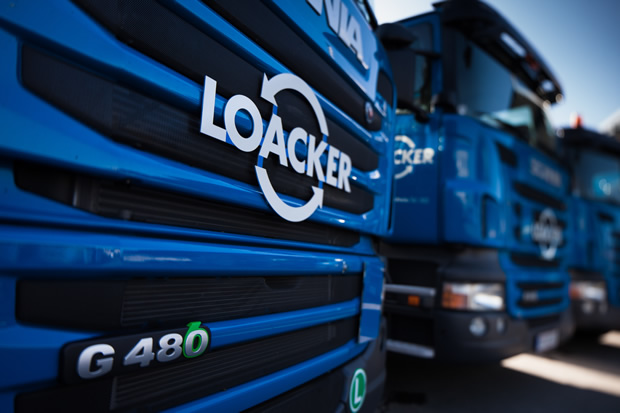The general public are adopting ‘dash cams’ and other safety and recording technology into daily driving; the RAC have said that almost 3 million Brits on the road are driving with one fitted, which is just under 10% of all road users. This indicates a real cultural shift amongst all drivers, and is also clear with commercial (particularly HGV) drivers; to continue this trend, drivers and employers need to ensure the adoption of safety equipment is consistent across the board, which also means extending these beyond new vehicles and retrofitting older, used vehicles.

Regulation Changes – London Leading the Way
A big part of improving the safety of haulage vehicles, in particular HGVs, on the road will come down to regulations and recommendations for how to approach updating vehicles. As time goes on, newer vehicles will likely comply as soon as they roll off the production line, but that is some way off yet. For many haulage firms, the approach will need to be retrofitting safety equipment to existing vehicle fleets to ensure any compliance with regulations.
In September last year (2015), Transport for London (TfL) rolled out the Safer Lorry Scheme, which was specifically designed to target the disproportionate number of cyclist deaths that related to accidents with HGVs.
The cost of this retrofitting is, according to City Hall, between £1,000 and £1,500 per vehicle to ensure they meet new rules for working in London. Major Boris Johnson simply summed it up by saying: “The cost per lorry is modest. The benefit to Londoners’ safety will be significant.”
These changings and requirements include:
- Implementation & maintenance of:
- Side guards
- Under run devices
- Additional Class V and VI mirrors (HGVs >3.5 tonnes)
- Any equipment that protects cyclists and pedestrians
Safety Successes & Implementations to Date
Technology is not a requirement as part of the Safer Lorry Scheme; enthusiast site Cycle Alert suggest that it’s either too difficult to enforce implementation or there’s no real ‘standard’ yet to set a minimum requirement for (or both). But that doesn’t mean it can’t have an impact at all.
Example Implementation
As an example, a drainage specialist firm (Lanes Group Plc) invested more than £200,000 in front, rear and side view camera systems, as well as motion sensors, all designed to provide maximum visibility for HGV drivers in their fleet.
The group have reported that incidents involving HGVs has fallen (which is the main aim), as well as cutting costs to the company by providing video evidence against fraudulent compensation claims made against them as a result of accidents involving their vehicles.
Haulage & HGV Accidents – Why They’re Falling
Released towards the end of last year, the Government released a large number of statistics around road casualties – with detailed information on incidents involving HGVs and haulage vehicles.
Industry body the Freight Transport Association (FTA) analysed these statistics, and showed how incident rates have actually dropped by 43% over the last 10 years, and 3.5% in the last year alone. (These figures are all measured as the number of fatal accidents per billion lorry miles).
In their press release, the FTA’s Head of National & Regional Policy and Public Affairs, Christopher Snelling, praised the logistics industry for committing to improving road safety performance. He added: “Whilst this has been a challenging year for road safety, these figures illustrate that our industry’s approach is making progress.
“Improved HGV vehicle designs and safety features, as well as improved driver training and management, will be part of this.”
HGV and haulage vehicle safety has always been an area of focus for the haulage industry, and some onus is on sellers (particularly of used vehicles) to ensure companies either have safety improved or, at the very least, the information they need at point of sale to make these changes.
One example is UK-based used trucks supplier Malcolm Taylor Commercial, who has said regarding haulage road safety: “[We] are well aware of the importance of ensuring vehicles are roadworthy and make sure to complete all the necessary checks before making any vehicle available for purchase.
“We are certainly backing [initiatives] to keep your drivers and everyone else out on the road safe at all times.”
What Safety Implementations Will Work Best?
In addition to the regulations and recommendations from TfL earlier in this post, there are a number of products that can be retrofitted to HGVs. These include:
- Single lens dash cams (typically just front-facing)
- Multi lens cameras (for multiple angles; 360 degree views)
- Side step area sensors
- Reversing sensors (some can be indicator activated to avoid ‘false beeps’)
- Blind spot detection systems (ideal for motorways or built up areas with cyclists)
September 2016 is when the government is likely to release its next set of road safety and traffic accident statistics, which is hopefully where we’ll see a positive impact on accident rates involving HGVs – due to a combination of better education for drivers, better adoption of retrofitting for older vehicles and clearer regulations and recommendations for what equipment can solve particular problems.
Malcolm Taylor
Jake Taylor
sales@trucks-4-sale.co.uk
01625 890 069
http://www.malcolmtaylorusedtrucks.co.uk/





Comments are closed.